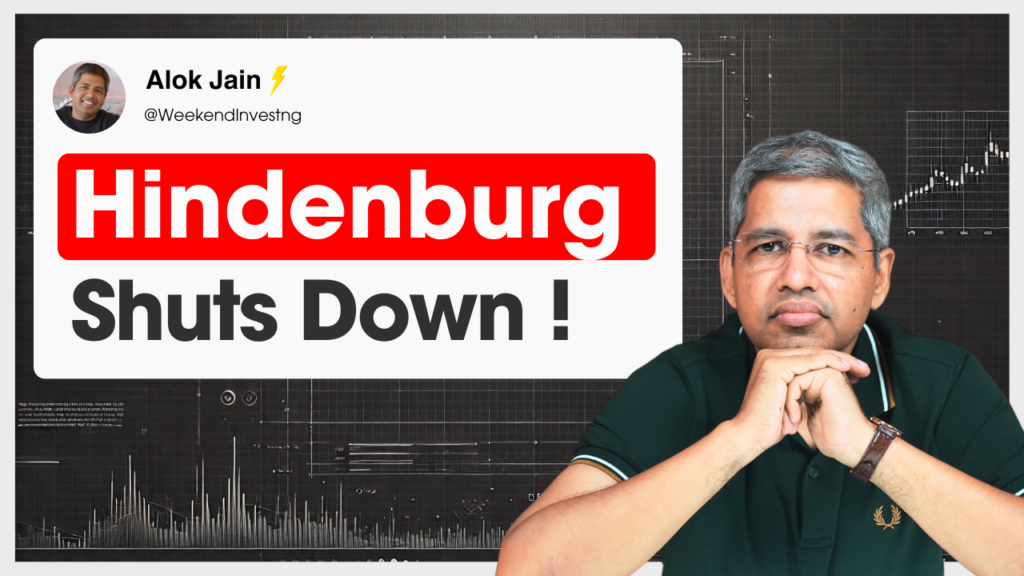
Today, the Nifty and the rest of the market inched up further, marking the third consecutive day of recovery. However, this recovery remains weak and indecisive, and it’s still too early to say we’ve seen the worst. We need much more proof before we can confidently declare that this is a near-term bottom. That said, the fact that the market has sustained its fall without breaking lower and even avoided covering morning gaps is offering some confidence to investors.
One of the bigger news items today was that Hindenburg has shut down its operations, and Adani stocks have been flying for the last few days. This has naturally raised many questions, which we’ll explore today. Specifically, we’ll discuss how to approach such news and incorporate it into your strategy when it comes to the market.
Where is the market headed?
Market Overview
As I mentioned, we’ve retraced a few hundred points—about 300 points—from the bottom. We are currently sitting at the level from where the market had initially broken down, which is around the 22300 to 22350 mark. If the recovery continues for a few more days, it could help build more confidence. A steady advance might eventually lead us to retest previous highs. However, there is also the risk that we could experience another meltdown after a few days of positive movement. So, while there’s a potential for a recovery, we still have some risks to navigate.
Looking at the US markets, they are doing quite well, and the US Dollar seems to be stabilizing against the Indian Rupee. This means that the headwinds we’ve been facing might be easing to some extent. The earnings reports released so far aren’t disastrous, which is a positive sign. However, any unexpected developments or excessive selling could still bring the market back down. Moreover, with less than 10 trading sessions remaining until the budget session, there could be some positioning ahead of this key event.
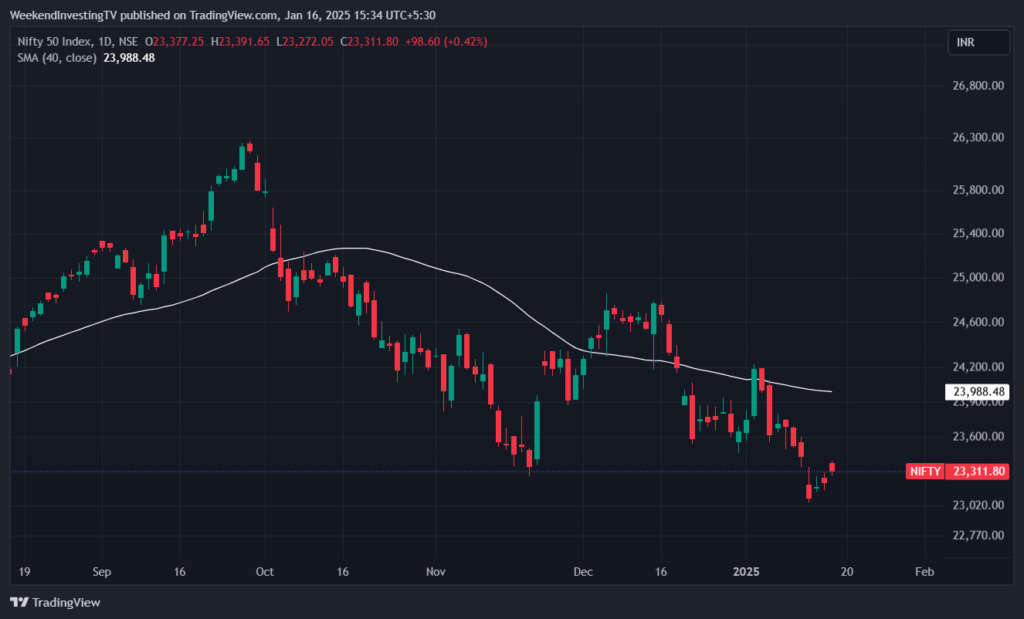
Nifty Next 50
On the Nifty Junior front, we’ve seen a solid 1.45% rally over the last three days. The Nifty Junior had fallen dramatically from 70,000 to 61,000, but it has now recovered to 64,500. While it’s not completely out of the woods, this recovery is encouraging.
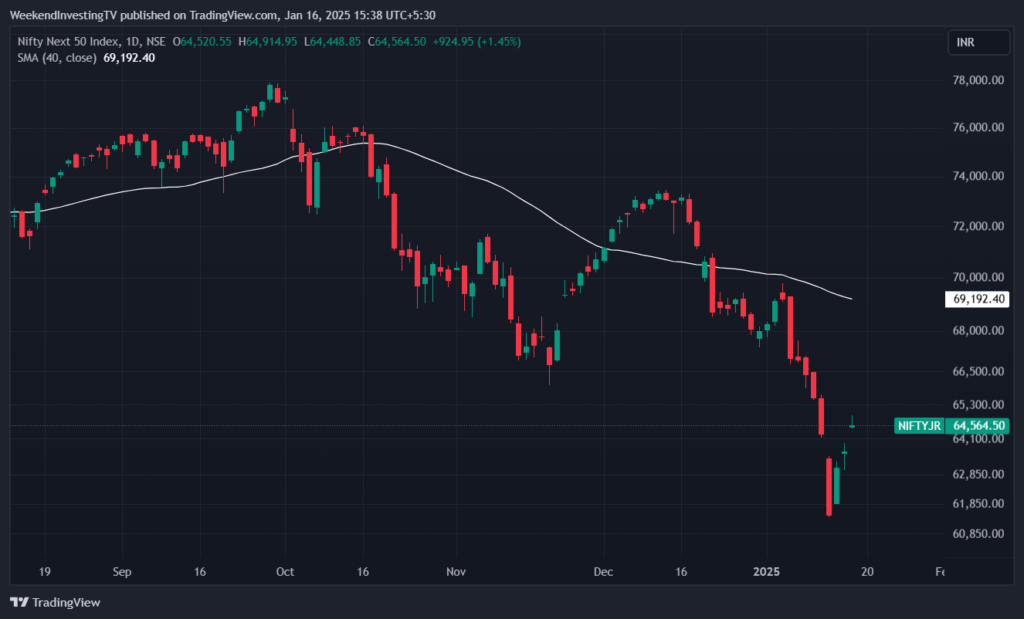
Nifty Mid and Small Cap
The midcap space has also shown some positive movement, with a 1% rise, and has closed the gaps that formed over the last few days.
The small caps, while still needing some consolidation, have made a slight recovery at their breakdown points, which is a small positive.
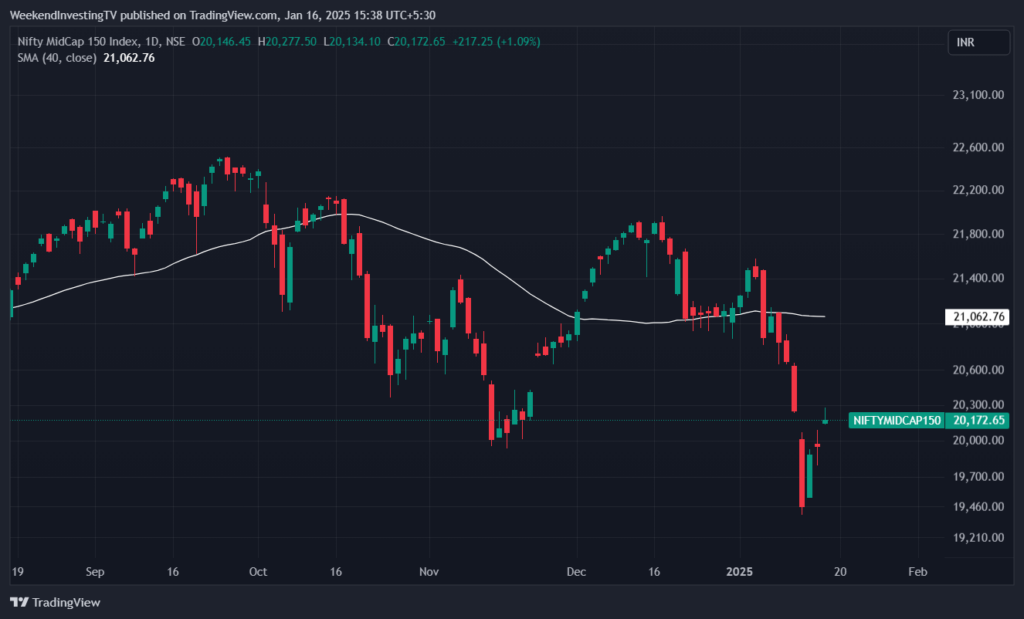
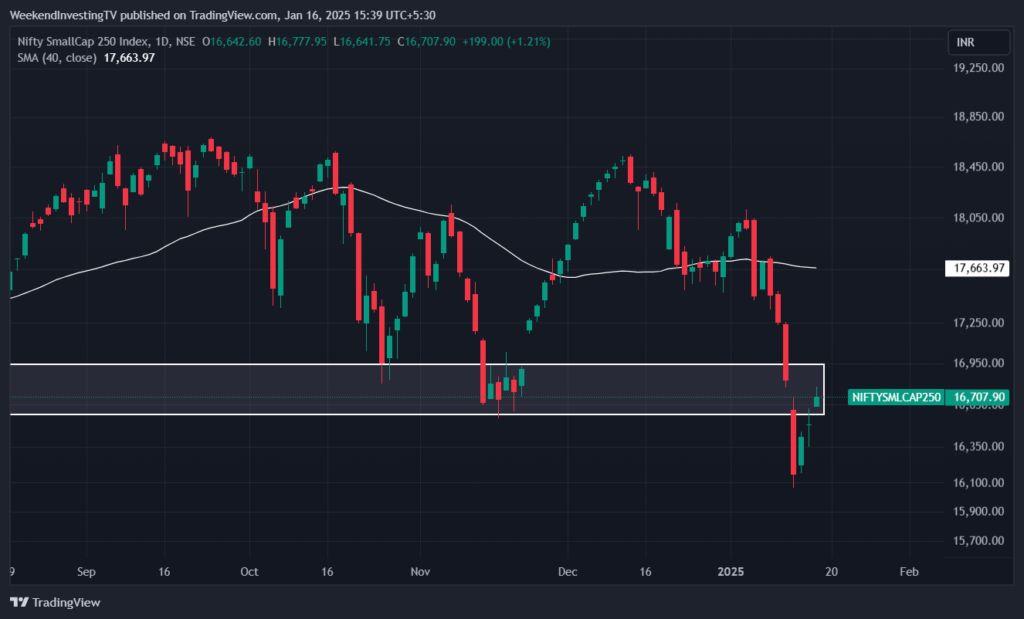
Nifty Bank Overview
In the banking sector, the Bank Nifty has also seen a 1.08% recovery, although it has not yet returned to its breakdown point. Bank Nifty, at this stage, isn’t showing clear bullish or bearish signals, but if it manages to climb above the 50,000 mark, that could suggest the worst may be behind us.
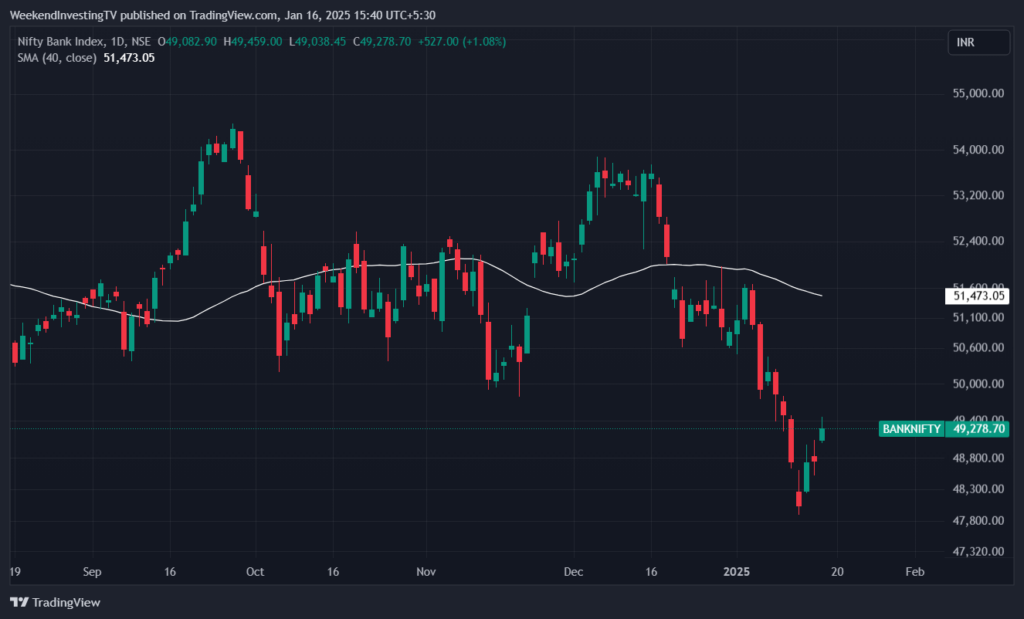
Advanced Declined Ratio Trends
Looking at market breadth, advances are outnumbering declines by a wide margin (374 to 123), which is a good sign for the market.

Nifty Heatmap
Heat maps show significant gains in the insurance and banking sectors. Stocks like SBI, Kotak, Access Bank, HDFC, ICICI, HDFC Life, and SBI Life are up, with HDFC Life seeing an impressive 8% rise. In the energy space, ONGC, Reliance, and Coal India are all performing well. The auto sector also saw gains with Maruti, Mahindra, and Tata Motors in the green. Even cement stocks have shown positive movement.
On the downside, IT stocks such as TCS, Infosys, HCL, and Wipro are all down. FMCG stocks, including Hindustan Unilever, Nestle, Britannia, and ITC, are also underperforming. Interestingly, FMCG stocks are making newer lows while the market recovers, which is concerning. FMCG is typically a defensive sector that attracts capital when markets are down, but the fact that it is underperforming may suggest there are deeper issues in the market.
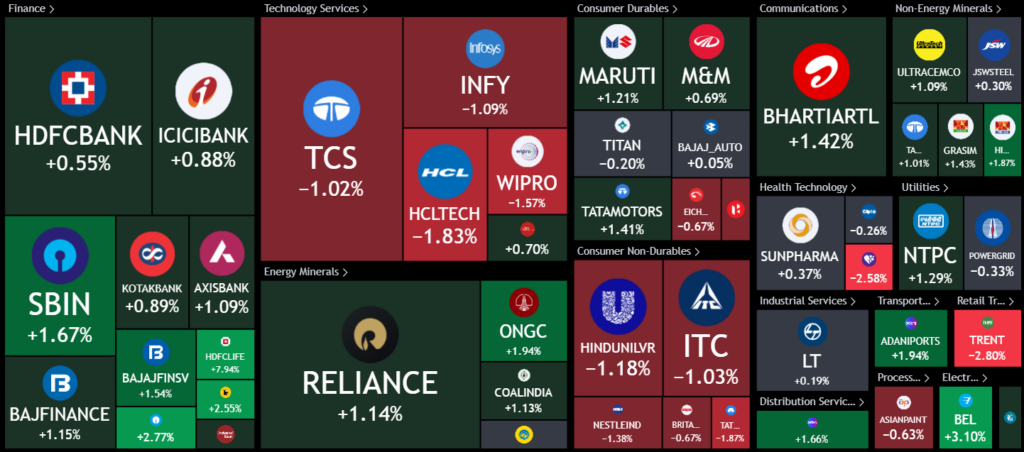
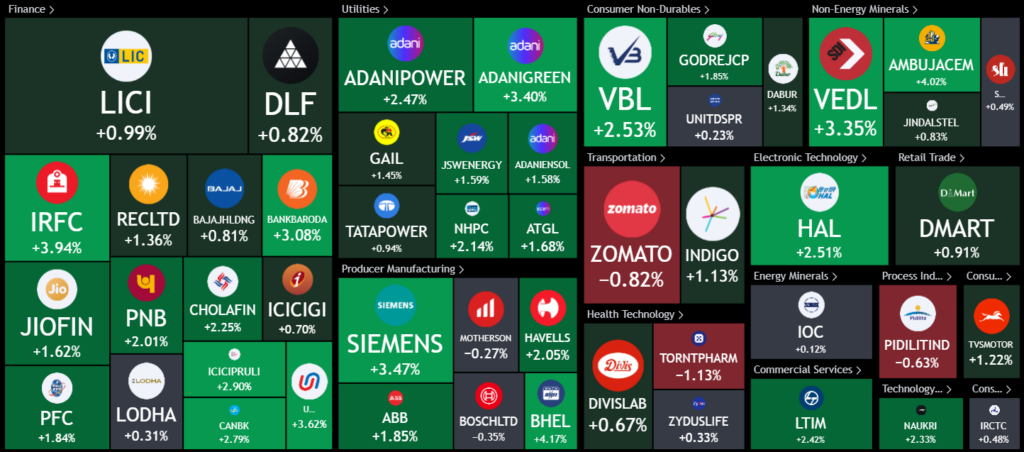
Sectoral Overview
Looking at performance over the last three months, several sectors are now in double-digit losses. Over a 12-month period, many sectors are also in the red, and most others are showing single-digit returns. Only sectors like autos, pharma, and IT are in positive territory.
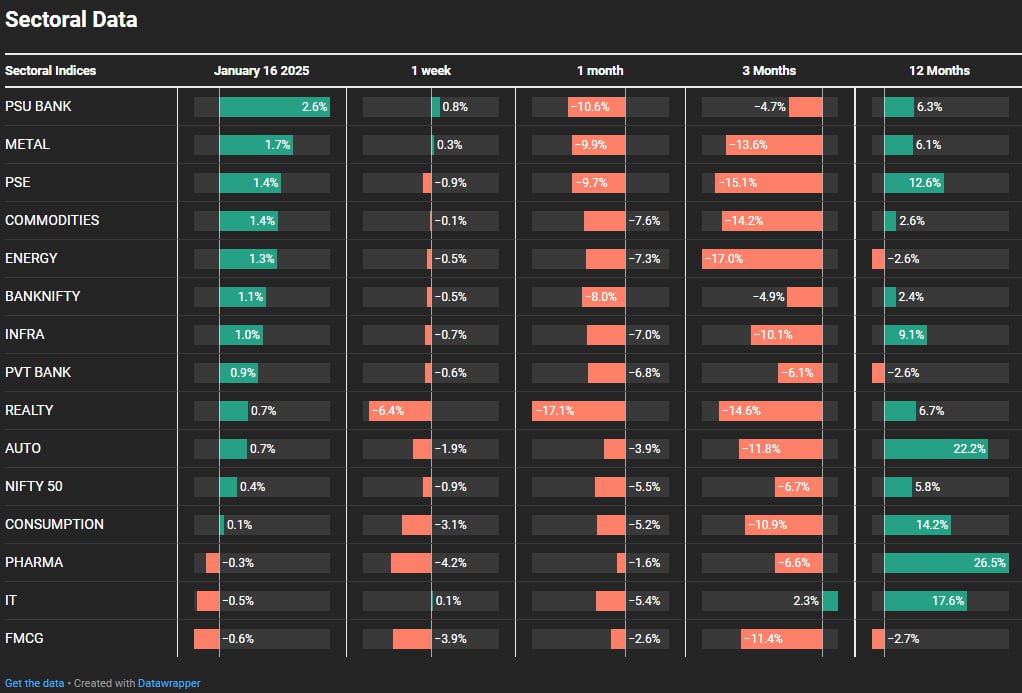
Sectors of the Day
Nifty PSU Banks Index
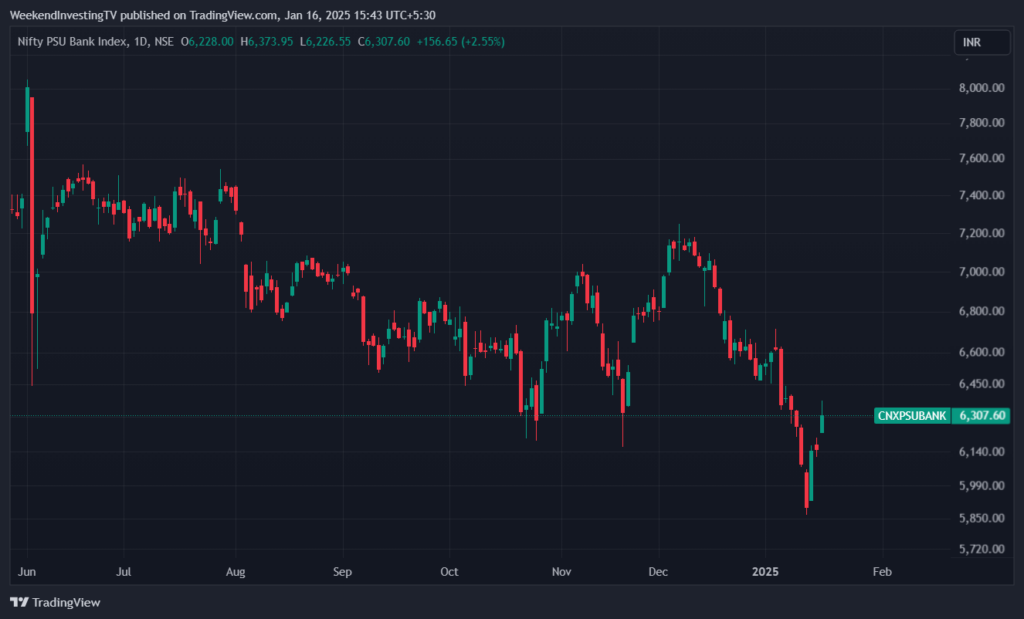
Story of the Day : Hindenburg and Adani stocks
A significant development today was the news that Hindenburg, a consultancy firm known for publishing critical reports about companies, has shut down. They were famous for targeting corporates, allegedly to expose wrongdoings and promote fair disclosures. The reasons for their shutdown are unclear, and the decision seems sudden, especially for an organization that has been successful in its operations. There’s speculation that they may be under pressure from regulators, but we can’t know for sure.
Hindenburg’s reports in the past have had a major impact on many stocks, with several companies seeing their share prices plummet by over 90%. On the flip side, some reports didn’t cause the anticipated damage, and stocks even went up. Hindenburg’s reports on Adani stocks were particularly controversial, and many believe they played a role in the sharp decline of Adani Group’s shares.
Adani stocks have recently experienced a rally, which could be a result of this news. There may have been a sense of relief in the market that Hindenburg is no longer around, or perhaps some settlement has taken place behind the scenes.
Hindenburg’s Legacy: Impact on Investors
To understand the impact of Hindenburg’s reports, let’s look at some of their past cases. For example, Nikola, the electric truck manufacturer, was targeted for allegedly deceiving investors about its technology. Hindenburg’s report caused the stock to fall by over 90%. Similarly, companies like Ehang, DraftKings, and Clover Health saw their stocks crash following Hindenburg reports, with some even recovering after the initial plunge. However, there have been other instances where stocks didn’t fall as expected, and some even went up.
This raises the question: Were Hindenburg’s reports always accurate? Some critics accuse them of front-running the market, taking short positions before publishing negative reports to benefit from the ensuing drops. Others argue that they were doing investors a service by bringing critical information to light.
Ajay Bagga, a respected market speaker, has mentioned that Hindenburg operated in a gray zone, publishing negative reports while also taking short positions. This could have created conflicts of interest and added to the volatility in the market. It’s possible that regulatory action was taken behind the scenes, leading to the shutdown of Hindenburg’s operations.
What Does This Mean for Investors?
In the end, focusing too much on news or reports like those from Hindenburg can be dangerous. The key to successful investing is to have a clear, rule-based approach and stick to it. No matter what external news comes your way, the market will ultimately correct itself, and prices will reflect the true value of a company over time.
In the case of Adani, even if you assumed that the reports were true, the price movement from 100 to 4,000 and then back to 1,000 provided ample opportunities to make money. The key is to not get caught up in the narrative. Price action is often a better guide than news reports. Had you followed a momentum-based strategy or a simple trend-following approach, you could have exited at the right time and potentially entered again when the stock started to recover.
So, what should you do? Focus on the price, not the news. Follow a rule-based system that helps you make decisions based on objective data rather than subjective news or reports. This way, you avoid falling into the traps set by sensational news and stay focused on the long-term trends.
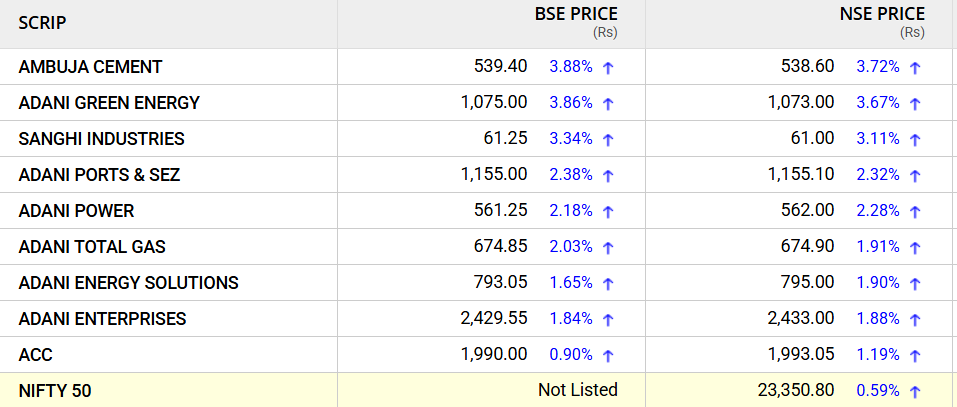

WeekendInvesting launches – PortfolioMomentum Report
Disclaimers and disclosures : https://tinyurl.com/2763eyaz






